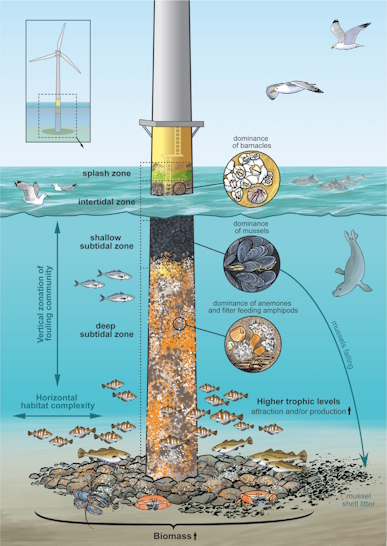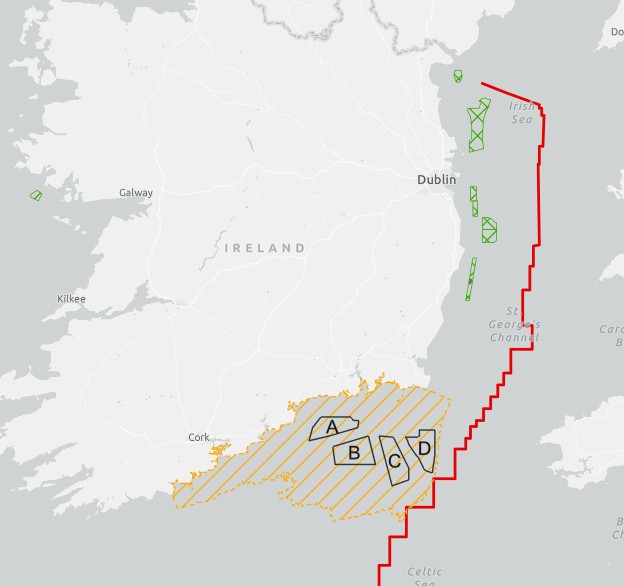Why Co‑existence Matters
Ireland is developing offshore wind to decarbonise electricity while protecting marine life.
This site explains, in simple terms, how careful planning and monitoring can help
whales and dolphins co‑exist with wind farms.
Artifical Reef
Structurally, the ecological response begins with high diversity and biomass in the flora and fauna that gradually colonize the complex hard substrate habitat. The species may include nonindigenous ones that are extending their spatial distributions and/or strengthening populations, locally rare species (e.g., hard substrate-associated fish), and habitat-forming species that further increase habitat complexity. Functionally, the response begins with dominant suspension feeders that filter organic matter from the water column. Their fecal deposits alter the surrounding seafloor communities by locally increasing food availability, and higher trophic levels (fish, birds, marine mammals) also profit from locally increased food availability and/or shelter. The structural and functional effects extend in space and time, impacting species differently throughout their life cycles.

Ireland's Planned Offshore Wind Farms
This image shows the 6 Phase 1 offshore wind farms which have entered the planning system (Plans to build the Sceirde Rocks project on the West Coast has since been abandoned but it remains in the planning system technically). Sites A, B, C and D refer to the new sites which were chosen by the state, the first of which, Tonn Nua (site a) will be auctioned later this year with 0.9GW planned for the site. The Phase 1 sites were picked by developers (known as the developer-led model) but policy has changed since 2023 and now offshore wind is plan-led (led by the state) in Ireland. Areas chosen by the state to be developed for offshore wind are known as DMAPs(Designated Maritime Area Plan).


